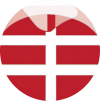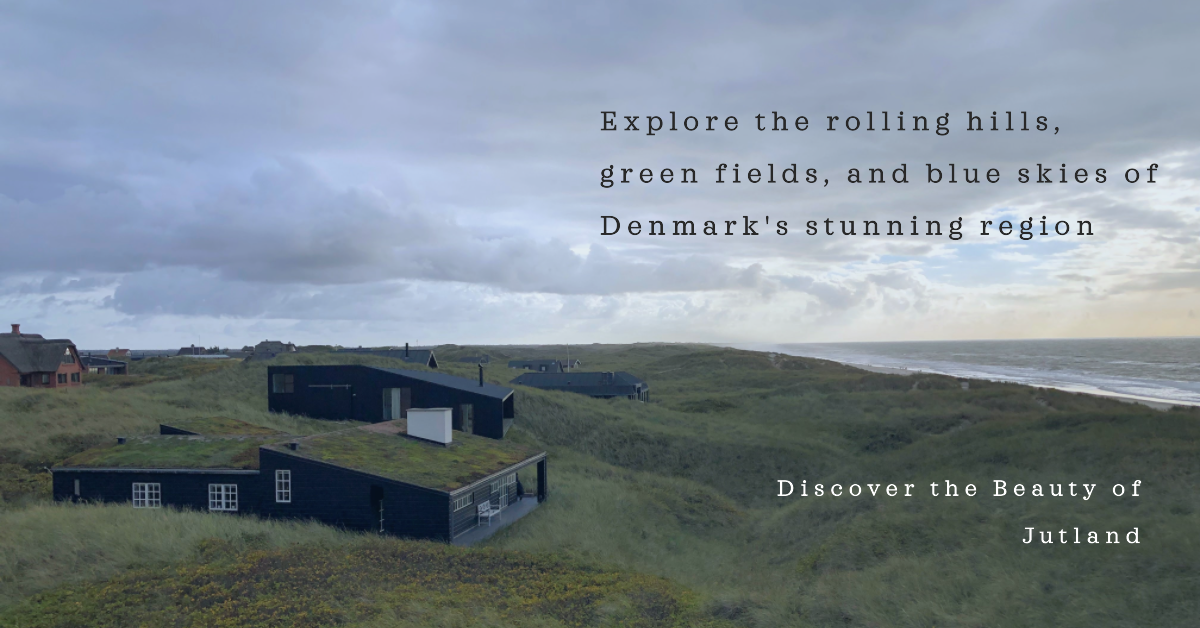Inhalt dieses Beitrages
Jutland is located on the Cimbrian Peninsula and forms the essential part of Denmark, which stretches from the German-Danish border to the Grenen Peninsula. Jutland is divided into North, South, East and West Jutland. The whole of Jutland is shaped by the sea and offers beautiful long sandy beaches.
Jutland is the peninsula, it is between North Sea and Baltic Sea is located. Jutland is the continental European part of Denmark. In terms of area, Jutland represents around 70% of the total area of Denmark, but with around 2 million inhabitants, only 40% of the total population. Jutland comprises the regions Nordjylland, Midtjylland and Syddanmark. Jutland invites you to a wide variety of activities, especially in nature.
So the country is special to you family holiday or an active holiday with your friends is very suitable. In the north of Jutland, in Grena, the two seas Kattegat and Skagerak meet. The Råbjerg Mile is Denmark’s largest shifting dune. It is now over a square kilometer. At Hanstholm inland is the unique dune landscape in Thy, Denmark’s first national park. South of the Limfjord is Rold Skov, the largest forest in Denmark. The Danes are particularly proud of the Møllehoj hill near Århus. At 132m, this is the highest point in the country.
On the west coast you will find dreamlike, kilometer-long lonely sandy beaches. Here, where the horizon seems to be infinite, you can stay in one of the numerous holiday homes. The beaches are all very child-friendly. Are you looking for a Denmark vacation with your dog? Then you have almost perfect opportunities for this in Jutland. The beaches here are a real wellness vacation for your dog too. From the westernmost point of Denmark, the Blåvandshuk, you can see the Horns Rev wind farm, one of the largest wind farms in the world. If you don’t want to miss out on the hustle and bustle of the city on your holiday, a visit to the largest city in Jutland in Århus is recommended.
The cities of Esbjerg, Ribe and Ringkøbing are also worth seeing. One of the most important economic sectors in the region is of course tourism, but also agriculture and fishing. The world-famous Lego company is based in Billund. The founders of the well-known Hi-Fi brand Bang og Olufsen also come from Jutland.
North Jutland
North Jutland is also called “the tip of Denmark” because the North Sea is on the west side and the Baltic Sea in the east. The largest city in North Jutland is Aalborg with 192,000 inhabitants and is 414 kilometers from Copenhagen. Aalborg Zoo is one of the attractions in North Jutland. A trip to the Aalborg Zoo is particularly worthwhile for families. Benches and tables have been set up in the zoo’s gardens so that you can eat your own food there. Another attraction in North Jutland is Denmark’s largest shifting dune. This is located at Thy National Park, which with its breathtaking beauty often robs visitors of words. In North Jutland, the sea is never more than 50 kilometers away, which makes swimming trips one of the most popular activities.
South Jutland
South Jutland’s largest city is Kolding and 230 kilometers from Copenhagen. The historic old town with all its charm and art and culture is very popular with tourists. The Koldinghus Museum is one of the top 5 attractions in South Jutland. The landscape in South Jutland is characterized by green fields, forests, fjords and castles. The Sonderborg Castle Museum is always worth a visit. An extensive range of sports, including fishing, canoeing and cycling, is popular with many tourists. Another natural experience is the Wadden Sea on the west side. Due to the close border with Germany, the architecture is also very similar. The magical holiday resort is popular with German holidaymakers Henne Strand on the North Sea .
West Jutland
Esbjerg is West Jutland’s largest city and 296 kilometers from Copenhagen. West Jutland is dominated by the rough North Sea in the west. Kilometers of sandy beaches invite you to go hiking by the sea. Many are not aware of the unique beauty of this landscape. Plants have settled in the shelter of the dunes and in some cases even entire forests have emerged, which are also ideal for hiking or cycling. Many of the holiday homes are located close to the sea, making them ideal for a sea holiday or fishing holiday. Various water sports are offered on the coast. West Jutland is mainly characterized by the former small fishing villages. You can learn more about the history of fishing in West Jutland in the Fisheries and Maritime Museum. Spottrtop Castle is a worthwhile attraction and always worth a visit. West Jutland is characterized by maritime history, galleries and cultural monuments.
East Jutland
Eastern Jewry’s largest city is Aarhus and 304 kilometers from Copenhagen. Aarhus is Denmark’s second largest city and a quiet and popular university city with a wide range of cultural activities. The most famous attraction and sight in Jutland is LEGOland. A tourist magnet that inspires both young and old. LEGOland is probably Denmark’s most famous sight. East Jutland offers much more than just LEGOland. You can follow in the footsteps of the Vikings and learn more about the history of Denmark. The bog corpse Tollundmann in Silkeborg is particularly worth a visit. The Tivoli Friheden amusement park is also a very popular destination. East Jutland also has a lot to offer in terms of nature, with child-friendly beaches and fjords on the Baltic Sea near Aarhus.

